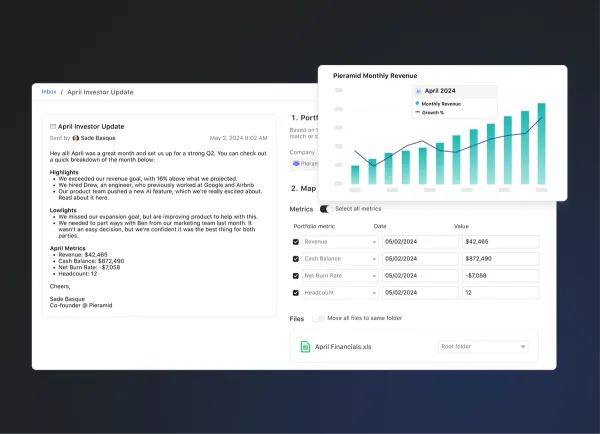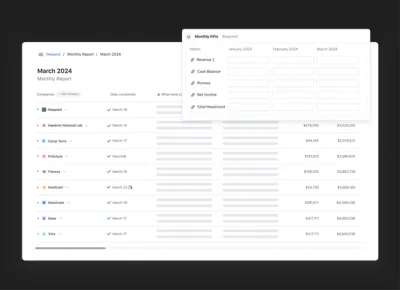
In venture capital, grasping the concept of Additional Paid-In Capital (APIC) is essential. It represents the premium investors pay over a share's nominal value, indicating their confidence in a company. Beyond a mere balance sheet entry, APIC demonstrates investor support, fueling startup innovation and growth.
What is Additional Paid-in Capital (APIC)
APIC, a critical financial indicator in a company's equity section, shows the excess amount investors pay over shares' par value during events like IPOs or financing rounds.
This metric is particularly significant in the startup and venture capital ecosystem, as it represents a tangible measure of investor confidence and financial commitment to a company's potential for growth and innovation. APIC is not just an indicator of the funds a company has raised; it underscores the premium investors are willing to pay for a stake in the company, beyond the basic valuation of shares. This additional capital can be crucial for startups, offering a vital resource for expansion, research and development, and scaling operations, ultimately influencing the company's strategic direction and growth trajectory.
Additional Paid-In Capital vs. Contributed Capital
APIC denotes funds received beyond a share's par value, differing from contributed capital, which sums all shareholder capital. This distinction illuminates a company's financial wellness and growth potential.
Contributed capital includes both the par value of issued shares, often referred to simply as "capital stock," and APIC. Essentially, it represents the initial and additional equity investments made by shareholders. The par value portion of contributed capital reflects the nominal value of shares, set at the company's inception and usually a minimal figure, serving as a legal requirement in some jurisdictions. APIC, on the other hand, captures the premium investors are willing to pay beyond this nominal value, driven by their belief in the company's future growth and success.
These two components' roles within a company's financial architecture are distinct yet complementary. Contributed capital forms the bedrock of a company's equity structure, signifying the total equity stake held by shareholders. APIC, as a subset, highlights the additional confidence and financial backing investors are prepared to offer, often reflecting the market's valuation of the company's potential beyond its book value.
Related resource: What Are Convertible Notes and Why Are They Used?
Sources of Additional Paid-In Capital
APIC originates from strategic activities such as IPOs, premium stock issuances, and stock-based compensation, which are crucial for securing funds beyond a share's par value. Each source has unique advantages, strategic implications, and impact on the company's overall financial health and equity structure. Understanding these sources provides a clearer picture of how companies leverage investor enthusiasm and market conditions to bolster their financial positions and support their long-term growth and development strategies.
Related resource: From IPOs to M&A: Navigating the Different Types of Liquidity Events
1. Initial Public Offerings (IPOs)
IPOs serve as a critical APIC source for companies going public, marking their first share offering to the public and usually bringing significant capital. IPOs allow companies to access funding from a broader investor base, surpassing the limits of private financing rounds predominantly participated in by venture capitalists and angel investors.
The significance of IPOs in generating APIC lies in the premium price at which shares are often offered to the public. This premium—over and above the par value of the shares—translates into APIC, reflecting the market's confidence in the company's growth prospects. The funds raised through an IPO can dramatically enhance a company's financial position, providing capital for expansion, debt reduction, and other strategic investments.
Moreover, the impact of an IPO on a company's financial position extends beyond immediate capital infusion. Successfully going public can increase a company's visibility, credibility, and ability to attract talent through stock-based compensation. However, it also subjects the company to regulatory requirements, increased scrutiny from investors and analysts, and the pressures of quarterly performance expectations.
IPOs are a crucial milestone for growth-oriented companies, offering a pathway to secure significant APIC that supports their strategic ambitions and solidifies their market standing.
2. Stock Issuance at a Premium
Issuing stocks at a premium is a strategic way to generate APIC, leveraging investor demand. This approach involves selling new shares for more than the stock's par value, with the difference between the sale price and the par value directly contributing to APIC. This strategy not only raises significant funds for the company but also signals strong market confidence and investor willingness to invest at higher valuations, reflecting positively on the company's perceived growth potential and stability.
The strategic nature of issuing stocks at a premium lies in its dual benefit: securing necessary capital for expansion and operational needs while simultaneously bolstering the company's equity base without incurring debt. This method of raising capital is particularly advantageous for companies with a strong brand reputation and clear growth trajectory, as it minimizes dilution of existing shareholdings and avoids the interest costs associated with debt financing.
Moreover, the premium paid over the par value represents investor confidence in the company's future prospects, making it a critical gauge of market sentiment. This strategy also provides companies with flexibility in timing and pricing, allowing them to maximize capital-raising efforts when market conditions are favorable. The APIC generated through such issuances is vital for funding research and development, marketing strategies, and other growth-oriented initiatives, ultimately contributing to the company's long-term success and shareholder value.
Issuing stocks at a premium is a strategic financial decision that is a testament to a company's market position and growth outlook. It plays a crucial role in shaping its financial landscape and supporting its strategic goals.
3. Stock-based Compensation
Stock options and RSUs are key to boosting APIC and attracting and retaining talent. These programs allow employees to share in the company's success through equity or equity-like incentives, aligning their interests with those of the company and its shareholders.
Stock options allow employees to purchase company stock at a predetermined price, potentially lower than future market value, over a specified period. When employees exercise these options, the difference between the exercise price and the market value at the time of exercise contributes to APIC, reflecting the value added to the company through employee commitment and efforts. This mechanism bolsters the company's financial resources and fosters a sense of ownership and partnership among employees, driving performance and innovation.
RSUs are another form of stock-based compensation where employees receive a set number of shares that vest over time, based on continued employment or meeting certain performance milestones. Upon vesting, the fair market value of these shares, minus any amount the employee pays for them (often nothing), is recorded as APIC. This direct injection of value into APIC underscores the tangible contributions of employees to the company's growth and success.
These stock-based compensation strategies are crucial in a company's financial planning and employee engagement. They not only enhance APIC but also serve as a non-cash way to compensate and incentivize key talent. By effectively using stock options and RSUs, companies can strengthen their APIC, improve their financial positioning, and foster a motivated, performance-driven culture that aligns with the company's long-term objectives.
Calculating Paid-in Capital
Calculating paid-in capital, which includes par value and APIC, reveals shareholders' total equity contributions, offering valuable insights into a company's financial support. This figure is a key component of a company's equity structure, revealing the financial backing it has received from its investors over time. Here's a simplified approach to calculating paid-in capital:
- Identify Par Value of Issued Shares: Start by determining the par value per share—a nominal value assigned to stock for legal purposes—and multiply it by the total number of issued shares. This gives you the base value of the equity issued.
- Calculate APIC: APIC is the amount over and above the par value that investors have paid for shares. To find APIC, subtract the total par value of issued shares from the total amount actually received from issuing those shares.
- Sum Up Total Paid-In Capital: Add the total par value from step 1 to the APIC calculated in step 2. The sum represents the total paid-in capital, reflecting the comprehensive equity contribution by shareholders.
For example, if a company issues 1,000 shares at a par value of $1 per share but sells them for $10 each, the par value of equity is $1,000 (1,000 shares x $1), and the APIC is $9,000 ([$10 - $1] x 1,000 shares). The total paid-in capital, therefore, is $10,000 ($1,000 + $9,000).
This calculation provides a clear picture of the financial resources shareholders have committed to the company, underscoring the importance of initial and additional contributions to its equity base. Understanding this process is crucial for investors aiming to assess a company's financial health and the extent of shareholder support.
Related resource: The Ultimate Guide to Startup Funding Stages
How Additional Paid-in Capital Works
APIC plays a fundamental role in shaping a company's financial structure, acting as a key indicator of the strength and stability of its equity base. APIC is generated when a company issues new shares and sells them at a price above their nominal or par value. The difference between the sale price and the par value is recorded as APIC on the company's balance sheet, under the shareholders' equity section. This mechanism not only provides companies with a vital source of funding without incurring debt but also reflects the market's valuation of the company, often seen as a vote of confidence from investors.
The mechanics of APIC directly influence a company's financial structure by enhancing its equity cushion. This is particularly important for startups and growth-phase companies, which may prefer equity financing to debt to avoid interest obligations and preserve cash flow. A robust equity base, bolstered by significant APIC, can improve a company's borrowing capacity, as lenders often view a strong equity position as a sign of financial health and stability.
Real-world examples illustrate the impact of APIC on companies' financial strategies and market perception. For instance, a tech startup conducting an IPO may price its shares significantly above the par value due to high investor demand, driven by its innovative products and market potential. The resulting APIC from this IPO boosts the company's financial resources for expansion and sends a positive signal to the market about its growth prospects.
Another example can be found in established companies issuing new shares at a premium during secondary offerings. These offerings, aimed at raising capital for strategic initiatives, can significantly increase APIC, demonstrating investor willingness to pay a premium based on the company's past performance and future growth expectations.
APIC is a critical component of a company's financial architecture through these mechanisms, enabling strategic growth initiatives, enhancing corporate valuation, and signaling confidence to investors and market analysts. Its role in a company's financial structure underscores the importance of equity financing strategies in corporate growth and investor relations.
How is Additional Paid-in Capital Taxed?
Though not directly taxed, APIC's impact on a company's financial health and shareholders' tax obligations is significant, navigating the complexities of regulatory frameworks. For businesses, APIC enhances the equity base without generating immediate taxable income. It represents capital received from shareholders beyond the nominal value of shares issued and, as such, does not constitute revenue or profit that would be subject to corporate income tax. This capital injection strengthens the company's balance sheet and can support growth and expansion efforts, potentially leading to increased profitability and, by extension, future tax liabilities through higher taxable income.
From an investor's perspective, the tax implications of APIC are primarily associated with capital gains. When investors sell their shares at a price higher than their purchase price, the profit realized is subject to capital gains tax. The initial investment, including any premium paid over the par value (i.e., APIC), forms the basis for calculating these capital gains. It's crucial for investors to accurately track their investment's cost basis, including APIC, to determine the correct amount of taxable gain upon disposition of the shares.
Stock-based compensation plans, which can contribute to APIC, also have specific employee tax considerations. For instance, when employees exercise stock options, the difference between the exercise price and the market value during exercise may be subject to income tax as compensation.
Investors and companies must also stay informed about regulatory changes and tax laws that might affect the taxation of equity transactions and capital gains, as these can vary by jurisdiction and over time. Consulting with tax professionals is advisable to navigate these complex areas effectively and ensure compliance with current tax laws while maximizing tax efficiency.
Track Fund Performance Data With Visible
By leveraging Visible, investors can track critical portfolio company and investment data all from one place. Learn how to get started with Visible to track your crucial investment data here.




